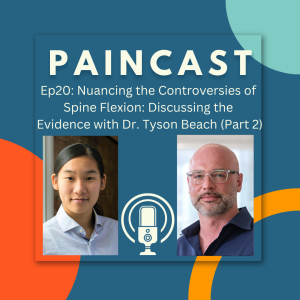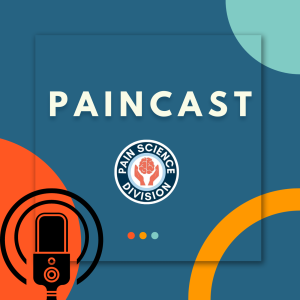
- Podcast Features
-
Monetization
-
Ads Marketplace
Join Ads Marketplace to earn through podcast sponsorships.
-
PodAds
Manage your ads with dynamic ad insertion capability.
-
Apple Podcasts Subscriptions Integration
Monetize with Apple Podcasts Subscriptions via Podbean.
-
Live Streaming
Earn rewards and recurring income from Fan Club membership.
-
Ads Marketplace
- Podbean App
-
Help and Support
-
Help Center
Get the answers and support you need.
-
Podbean Academy
Resources and guides to launch, grow, and monetize podcast.
-
Podbean Blog
Stay updated with the latest podcasting tips and trends.
-
What’s New
Check out our newest and recently released features!
-
Podcasting Smarter
Podcast interviews, best practices, and helpful tips.
-
Help Center
-
Popular Topics
-
How to Start a Podcast
The step-by-step guide to start your own podcast.
-
How to Start a Live Podcast
Create the best live podcast and engage your audience.
-
How to Monetize a Podcast
Tips on making the decision to monetize your podcast.
-
How to Promote Your Podcast
The best ways to get more eyes and ears on your podcast.
-
Podcast Advertising 101
Everything you need to know about podcast advertising.
-
Mobile Podcast Recording Guide
The ultimate guide to recording a podcast on your phone.
-
How to Use Group Recording
Steps to set up and use group recording in the Podbean app.
-
How to Start a Podcast
-
Podcasting
- Podcast Features
-
Monetization
-
Ads Marketplace
Join Ads Marketplace to earn through podcast sponsorships.
-
PodAds
Manage your ads with dynamic ad insertion capability.
-
Apple Podcasts Subscriptions Integration
Monetize with Apple Podcasts Subscriptions via Podbean.
-
Live Streaming
Earn rewards and recurring income from Fan Club membership.
-
Ads Marketplace
- Podbean App
- Advertisers
- Enterprise
- Pricing
-
Resources
-
Help and Support
-
Help Center
Get the answers and support you need.
-
Podbean Academy
Resources and guides to launch, grow, and monetize podcast.
-
Podbean Blog
Stay updated with the latest podcasting tips and trends.
-
What’s New
Check out our newest and recently released features!
-
Podcasting Smarter
Podcast interviews, best practices, and helpful tips.
-
Help Center
-
Popular Topics
-
How to Start a Podcast
The step-by-step guide to start your own podcast.
-
How to Start a Live Podcast
Create the best live podcast and engage your audience.
-
How to Monetize a Podcast
Tips on making the decision to monetize your podcast.
-
How to Promote Your Podcast
The best ways to get more eyes and ears on your podcast.
-
Podcast Advertising 101
Everything you need to know about podcast advertising.
-
Mobile Podcast Recording Guide
The ultimate guide to recording a podcast on your phone.
-
How to Use Group Recording
Steps to set up and use group recording in the Podbean app.
-
How to Start a Podcast
-
Help and Support
- Discover

Ep20: Nuancing the Controversies of Spine Flexion: Discussing the Evidence with Dr. Tyson Beach (Part 2)
Dr. Tyson Beach is currently a teaching professor at the University of Waterloo, teaching courses on the biomechanics and assessment of human movement, exercise prescription, and low-back disorders. His previous research focused on quantitative motion analyses, prevention of work-related musculoskeletal disorders, and advancing fundamental knowledge of spinal mechanics, control, and injury causation. He also collaborates with other knowledge producers (researchers) and users (practitioners) to design, implement, and evaluate physical activity and exercise programs for workers and athletes.
This episode is a continuation of the discussion from the last episode. We continued to discuss important factors to consider when reading the literature relating to lifting and spine flexion. In this episode, we went more in-depth in spine biomechanics during lifting in different contexts.
Relevant articles (Part 2)
- Frost, D. M., et al. (2015). Exercise-based performance enhancement and injury prevention for firefighters: contrasting the fitness-and movement-related adaptations to two training methodologies. J. Strength Cond. Res., 29(9), 2441-2459.
- https://uwaterloo.ca/centre-of-research-expertise-for-the-prevention-of-musculoskeletal-disorders/resources/position-papers/improving-workplace-manual-handling-training-programs
- Mawston, G.,et al. (2021). Flexed lumbar spine postures are associated with greater strength and efficiency than lordotic postures during a maximal lift in pain-free individuals. Gait & Posture, 86, 245-250.
- Marras, W. S., et al. (1995). Biomechanical risk factors for occupationally related low back disorders. Ergonomics, 38(2), 377-410.
- Marras, W. S.,et al. (1993). The role of dynamic three-dimensional trunk motion in occupationally-related low back disorders. Spine, 18(5), 617-628.
- Dolan, P., et al. (1994). Passive tissues help the back muscles to generate extensor moments during lifting. J Biomech, 27(8), 1077-1085.
- Dolan, P., & Adams, M. A. (1993). The relationship between EMG activity and extensor moment generation in the erector spinae muscles during bending and lifting activities. Journal of biomechanics, 26(4-5), 513-522.
- Kalkhoven, J. T., et al. (2021). Training load and injury: causal pathways and future directions. Sports Med, 51, 1137-1150.
- Adams MA. Biomechanics of back pain. Acupunct Med. 2004 Dec;22(4):178-88. doi: 10.1136/aim.22.4.178. PMID: 15628775.
Discussion flow
(00:01:37) How movement-focused training facilitates the transfer of movement behaviour from training to work
(00:05:51) Why typical occupational training does not work to change injury reporting
(00:11:18) There is no universal safe way to lift for all people
(00:15:05) Arguments for the irrelevance of flexion: "Most heavy lifting is associated with back pain", "everyone flexes when they lift", and anecdotes of people lifting flexed with no pain
(00:19:09) How movement plays a role in load management in principle and in practice
(00:26:19) Unpacking how flexed lifting postures produces greater lifting strength and efficiency
(00:31:40) Meaning of "efficiency"
(00:36:37) Ability to adapt to loading in active vs passive tissues
(00:38:00) Details of multi-level spine modelling, flexion increases shear loading and decreases passive tissue tolerance
(00:42:16) Different perspectives amongst biomechanists and meaning to the practitioners
(00:43:32) Posture plays a role in load management
(00:44:59) Neutral/lordotic posture creates muscle shear to counter external anterior shear
(00:48:04) Relationship between flexion and compression forces along the column
(00:51:14) Meaning of "neutral" on a tissue level, functional level, and practical level
(00:55:53) Involvement of the flexion-relaxation phenomenon
(00:59:27) Amount of flexion perceived in the eyes vs in the joints
(01:01:53) What conclusion can we make?
(01:04:35) What about powerlifting?
Paincast is dedicated to bringing together researchers, clinicians, and students to discuss topics related to pain and physiotherapy. The primary purpose is to facilitate knowledge translation and critical thinking. Some episode posit themselves as more educational than others, and some more opinionated than others. The listener is encouraged to critically reflect on the content. While there is an effort to incorporate research evidence, and the topic is researched by the host (Tiffany), we recognize there is room for improvement and there is expertise in the community. As such, we invite constructive critique and that you inform us of any inadvertent errors, so that we may correct them. You may submit your feedback through this form: https://forms.gle/UFfbUHBh8uKwSKgS8
More Episodes
Create your
podcast in
minutes
- Full-featured podcast site
- Unlimited storage and bandwidth
- Comprehensive podcast stats
- Distribute to Apple Podcasts, Spotify, and more
- Make money with your podcast
It is Free
- Privacy Policy
- Cookie Policy
- Terms of Use
- Consent Preferences
- Copyright © 2015-2025 Podbean.com






